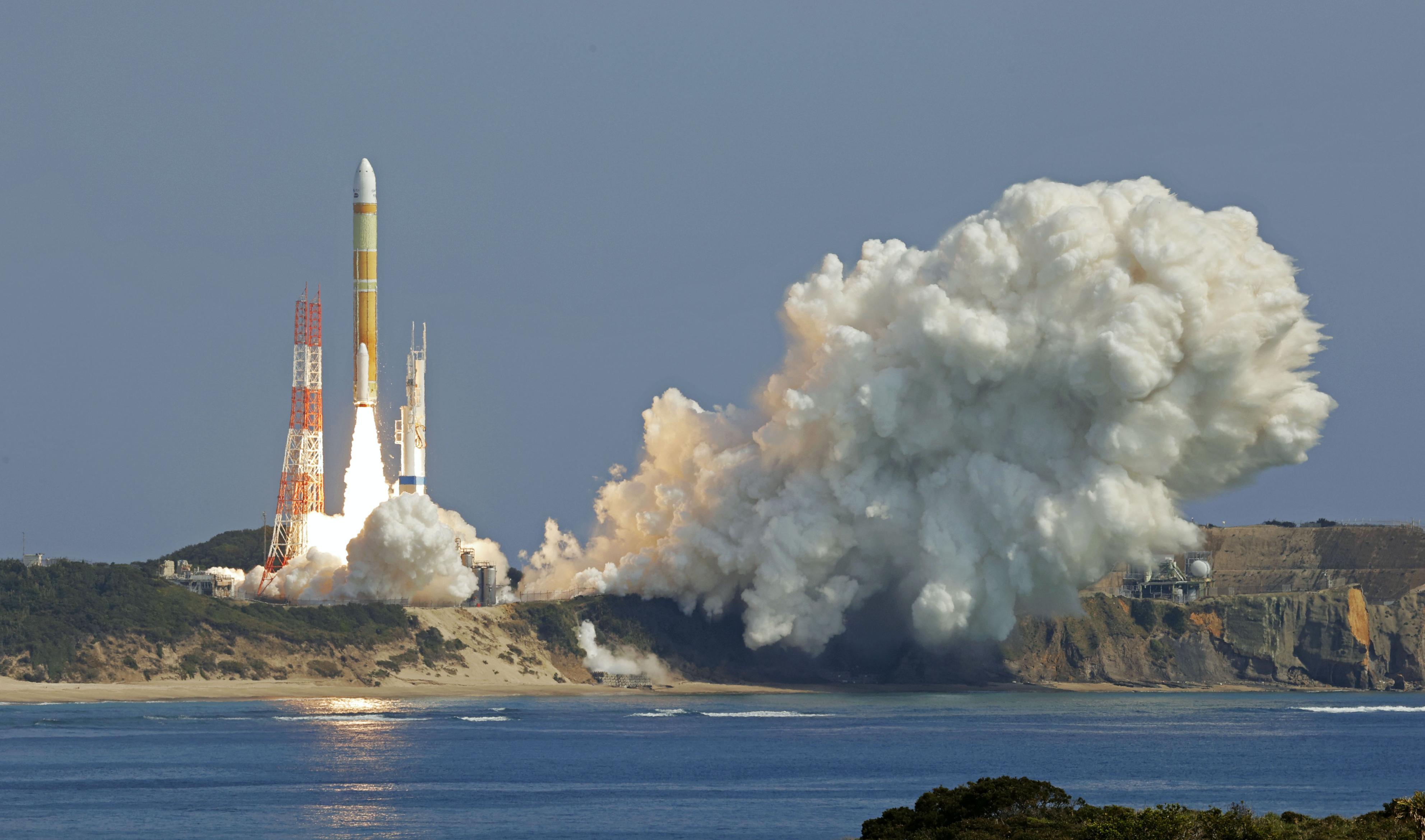ID :
654780
Tue, 03/07/2023 - 09:57
Auther :
Shortlink :
https://oananews.org//node/654780
The shortlink copeid
Japan's new flagship H3 rocket launch fails, ordered to self-destruct

MINAMITANE, Japan, March 7 Kyodo - Japan's new flagship H3 rocket lifted off Tuesday for the first time but was ordered to self-destruct minutes later after its second-stage engine failed to ignite, the Japan Aerospace Exploration Agency said.
The launch failure came after a string of delays including one last month in which a launch attempt was aborted moments before blastoff at the Tanegashima Space Center on Tanegashima Island in the southwestern prefecture of Kagoshima.
The successor to the country's reliable H2A rocket was launched from the center at around 10:37 a.m. as scheduled. However, JAXA sent a self-destruct command to the newly developed rocket at 10:51 a.m. after the launch vehicle was deemed unable to complete its intended mission.
Tuesday's development marks another blow to JAXA, whose smaller Epsilon-6 rocket was ordered to self-destruct just minutes after liftoff in October last year as it deviated from its intended trajectory.
The latest setback may also lead to calls for an overhaul of Japan's space strategy under which the H3, the first revamp of its main launch vehicle in around 20 years, was expected to give the country a foothold in the increasingly competitive satellite launching business.
Science minister Keiko Nagaoka said Tuesday's outcome was "extremely regrettable" and apologized for "failing to meet the expectations of the public and related parties."
She said a task force established at the Ministry of Education, Culture, Sports, Science and Technology will work with JAXA to determine what caused the failure "as promptly and thoroughly as possible."
The failed mission, dubbed Test Flight No. 1, was supposed to put into orbit the Advanced Land Observing Satellite-3, which was expected to become a key tool for the government when managing disasters.
The satellite also carried a sensor from the Defense Ministry's acquisition agency capable of detecting two types of infrared rays that was to be tested to see if it could detect ballistic missile launches.
The rocket's previous launch attempt on Feb. 17 was aborted moments before liftoff because of malfunctioning electrical equipment, according to the agency. JAXA later said it had since taken steps to address the problem.
At a park around 6 kilometers from the launch site, approximately 1,000 people gathered to watch Tuesday's launch. People cheered and clapped as the rocket lifted off into the sky, but exclaimed in disappointment once they were told it had failed.
"It cannot be," one spectator said. "It's a pity (that this happened) after the rocket finally lifted off."
The H3 was originally scheduled for launch by JAXA and its prime contractor Mitsubishi Heavy Industries Ltd. by the end of March 2021. But the plan was pushed back by around two years over issues with the newly developed LE-9 engine and to replace parts after the Epsilon-6 rocket was ordered to self-destruct.
The failure of the smaller rocket meant that last year marked the first time in 18 years that there was not a single successful launch of a domestically developed rocket in Japan.
The H3 rocket is intended to be used not only to launch satellites and probes but also to carry a new unmanned cargo transporter that will deliver supplies and materials to the International Space Station and Gateway, a lunar-orbiting outpost planned under the U.S.-led Artemis space program.
At 5 billion yen ($37 million), the H3 rocket is around half the cost of its predecessor but has 1.3 times the satellite launch capacity.
Global competition has intensified since innovative U.S. firm SpaceX, which boasts a strong track record in rocket launches, entered the market.
Japan hopes to increase orders for satellite launches from domestic and international clients by promoting the 97.8 percent success rate of the H2A rocket, which only failed once in 46 launches since its introduction in 2001.
==Kyodo





